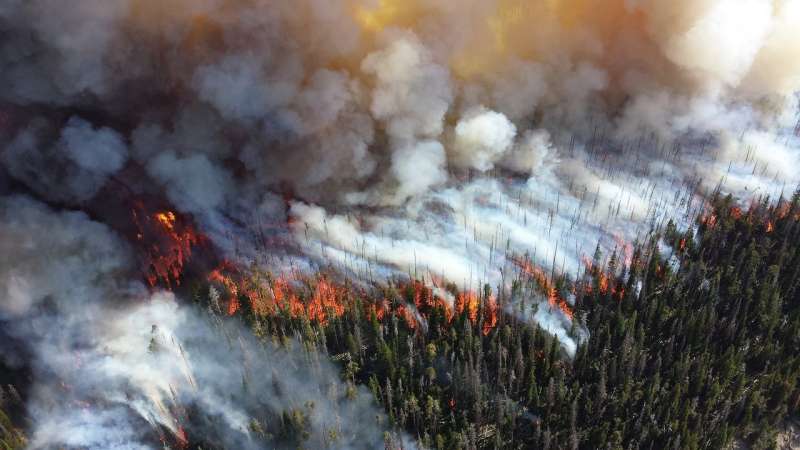Wildfires threaten water quality for up to eight years after they burn, study shows

Sadie Harley
scientific editor

Robert Egan
associate editor

Years after wildfires burn forests and watersheds, the contaminants left behind continue to poison rivers and streams across the Western U.S.—much longer than scientists estimated.
A study in Communications Earth & Environment analyzed water quality in more than 500 watersheds across the Western U.S., and is the first large-scale assessment of post-wildfire quality.
The research was led by scientists from the Cooperative Institute for Research in Environmental Science (CIRES) at the University of Colorado Boulder.
"We were attempting to look at notable trends in post-wildfire water quality across the entire U.S. West, to help inform water management strategies in preparing for wildfire effects," said Carli Brucker, lead author and former CU Boulder and Western Water Assessment Ph.D. student.
The results showed contaminants like organic carbon, phosphorus, nitrogen, and sediment can degrade water quality for up to eight years after a fire. Water managers can use this data to help them plan for the future and respond appropriately when wildfires strike.
CIRES Fellow and Western Water Assessment Director Ben Livneh was the principal investigator and co-author of the study. Much of his research focuses on hydrology, or water supply, on a continental scale. When he realized he could use the same approach to understand large-scale trends in water quality, he was excited to test the method.
"There's been a lot of work, for example, in the National Climate Assessment and the International Panel on Climate Change talking about changes in global water supply," said Livneh, associate professor in the Department of Civil, Environmental and Architectural Engineering.
"But those assessments point to this gap in water quality assessments in a continental scale context, whereas people like me in physical hydrology have been thinking about the continental scale challenges for a while."
Researchers have long known that fire ash and soil destruction contribute to degraded water quality. Yet, past research has largely been limited to state and municipal studies—cities and towns test water quality in local streams and rivers following large fires.
For the new study, the team analyzed more than 100,000 water samples from 500 sites: half from burned river basins and half from unburned. They measured levels of organic carbon, nitrogen, phosphorus, and sediment as well as turbidity, or cloudiness, of each sample.
To understand wildfire-driven impacts, the team built data-driven models to measure how much contaminants changed in each basin before and after wildfires. In the final step, they compiled data to find the average across the burned basins for each pre- and post-wildfire year, and then compared those to the unburned basins.
The results showed watersheds take longer to recover after wildfires than previous studies found. Organic carbon, phosphorus, and turbidity are significantly elevated in the first one to five years post-fire. Nitrogen and sediment show significant increases up to eight years post-fire. Fire-driven impacts were worse in more forested areas.
"It can take two years, up to eight years, for the effect to be fully felt," Livneh said. "Sometimes it can be a delayed effect, meaning, it's not all happening right away, or sometimes you need a big enough storm that will mobilize enough of the leftover contaminants."
Each watershed in the study felt the impacts differently. This is likely tied to where the fire struck—a fire closer to the river would be worse than an upstream fire. Different soils, vegetation, and weather also change the impact in each watershed, making it difficult to plan for the future.
"There's a huge amount of variability in sedimentation rates," said Brucker, who now works as a consultant. "Some streams are completely clear of sediment after wildfires, and some have 2,000 times the amount of sediment."
Despite variability across river basins, the study provides concrete numbers that give insight to water managers across the Western U.S. Researchers hope the results provide better direction on informing future planning efforts for increasing wildfire resilience.
"I'm hoping that providing concrete numbers is very impactful to water managers," Brucker said. "You can't fund resilience improvements on general concerns alone. Water managers need real numbers for planning, and that's what we're providing."
More information: Carli P. Brucker et al, Wildfires drive multi-year water quality degradation over the western United States, Communications Earth & Environment (2025).
Journal information: Communications Earth & Environment
Provided by University of Colorado at Boulder



















